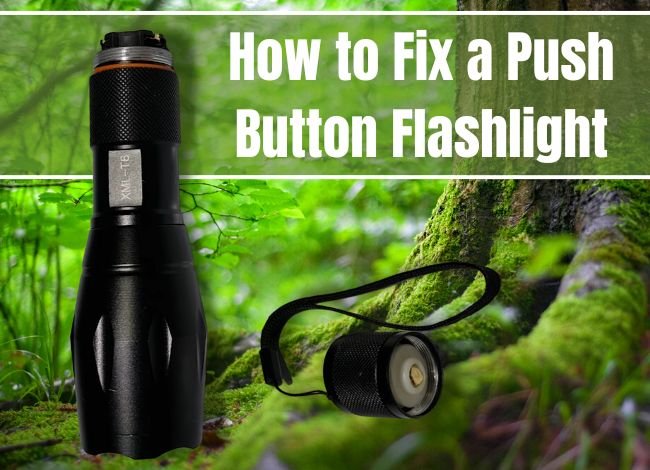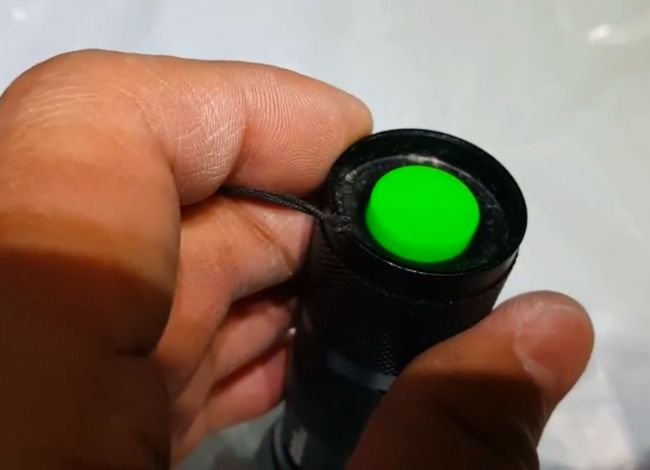Last Updated on September 10, 2025

A flashlight is an essential tool in every household, vehicle, or outdoor adventure kit. Whether you’re hiking, camping, or dealing with a power outage, a reliable flashlight can make all the difference. But what happens when your flashlight stops working? Especially one with a push-button switch?
In this push-button flashlight repair guide, we’ll walk you through everything you need to know about diagnosing, repairing, and maintaining your flashlight to extend its lifespan and performance.
What Is a Push-Button Flashlight?
A push-button flashlight is a handheld electric torch that operates with a simple on/off switch mechanism. This type of flashlight includes a button—usually located at the tail cap or on the body—which, when pressed, completes an electrical circuit and powers the light.
Key Characteristics:
- Easy to operate with one hand
- Durable design, often water-resistant
- Popular among emergency workers, mechanics, and outdoor enthusiasts
Despite their reliability, push-button flashlights can develop issues over time. Understanding how they work is the first step in fixing them.
How Does a Push-Button Flashlight Work?
A typical push-button flashlight consists of:
- Battery compartment: Supplies power
- LED or bulb: Emits light
- Wiring and circuits: Carries the current
- Push-button switch: Connects or breaks the circuit

When you press the button:
- Two internal contact strips connect.
- This completes the circuit.
- Power from the battery flows to the LED.
- The flashlight turns on.
When the connection is interrupted, the flashlight turns off.
Why Is My Push-Button Flashlight Not Working?
There can be multiple reasons why your flashlight stops functioning. Let’s explore the most common problems and their solutions.
1. Damaged or Dead Battery
Batteries lose charge over time or malfunction due to overuse, leakage, or improper charging.
Symptoms:
- Dim or no light
- Flashlight flickers
- Battery corrosion
Solution:
- Replace the old batteries with fresh, compatible ones.
- Always insert batteries in the correct polarity.
- If there’s corrosion, clean the battery terminals with a cotton swab and isopropyl alcohol.
2. Faulty Push-Button Switch
The push-button mechanism is critical for functionality. Rough usage or wear over time can make it unresponsive.
Symptoms:
- Button feels stuck or loose
- Flashlight doesn’t turn on despite new batteries
Solution:
- Disassemble the flashlight and clean the switch area.
- If broken, replace the switch entirely with a compatible part.
3. Corroded Contacts
Moisture exposure can corrode the internal metal components, especially if the flashlight isn’t waterproof.
Symptoms:
- Power issues
- Physical rust or greenish corrosion
Solution:
- Use sandpaper or a metal file to clean mild corrosion.
- For stubborn rust, use vinegar followed by isopropyl alcohol.
4. Damaged Internal Wiring
Overheating, drops, or manufacturing defects can cause wires to disconnect or short-circuit.
Symptoms:
- Light flickers
- Only works when you press hard or wiggle the flashlight
Solution:
- Carefully open the flashlight and inspect wiring.
- Re-solder or replace any broken wires.
How to Fix a Push-Button Flashlight: Step-by-Step Repair
Here’s a complete walkthrough to fix your flashlight at home.
Tools Needed:
- Phillips screwdriver
- Needle-nose pliers
- Multimeter (optional)
- Isopropyl alcohol and cotton swabs
- Replacement parts (battery, switch, wires)
Step 1: Disassemble the Flashlight
- Unscrew the tail cap and head cap.
- Remove the battery compartment cover.
- Carefully detach any visible screws holding the casing.
Step 2: Remove the Battery
- Take out the old battery.
- If there is any leakage or corrosion, clean the area using alcohol.
Step 3: Examine the Push Button
- Using a screwdriver or pliers, remove the button from the flashlight casing.
- Clean beneath the button.
- Check for rust, stickiness, or mechanical failure.
Step 4: Inspect the Wiring
- Look for burnt or disconnected wires.
- If needed, reconnect using a soldering iron or replace damaged sections.
Step 5: Clean All Electrical Contacts
- Using cotton swabs and isopropyl alcohol, clean all contact points including terminals, switch pads, and connection plates.
Step 6: Replace Faulty Components
- If the switch is broken beyond repair, install a new push-button switch.
- Ensure compatibility with voltage and design.
Step 7: Reassemble the Flashlight
- Carefully put back all components in reverse order.
- Insert a new or fully charged battery.
- Screw the caps tightly.
Step 8: Test It
- Press the button to turn it on.
- If it doesn’t work, double-check the wiring or consider consulting a professional.
Bonus: How to Know If the Battery Needs Replacing
Many users confuse a weak battery with a faulty flashlight. Here are signs that it’s time to replace the battery:
- Diminished brightness
- Battery leaks or bulging
- Flashlight works intermittently
- Old battery date (check packaging)
💡Tip: Always carry spare batteries when heading outdoors.
Push-Button Flashlight Maintenance Tips
To keep your flashlight working optimally:
- Avoid Moisture: Store in a dry location.
- Clean Monthly: Use a soft cloth and alcohol to clean the switch and contacts.
- Check for Rust: Regularly inspect metal areas for signs of corrosion.
- Remove Batteries: If not using for weeks, remove batteries to prevent leakage.
- Use Rechargeable Batteries: They’re cost-effective and eco-friendly.
When to Seek Professional Help
If your flashlight still doesn’t work after trying the above:
- Internal PCB or circuit board may be damaged.
- Soldering may require expertise.
- The bulb or LED could be broken.
In such cases, take the flashlight to a technician or replace it with a new, reliable model.
Final Thoughts: Fix It or Replace It?
Knowing how to fix a push-button flashlight can save time and money. While most minor issues like dirty switches, dead batteries, or corroded contacts can be fixed at home, major issues like circuit board failure might not be worth the effort or cost.
If you frequently rely on your flashlight for work, emergencies, or outdoor activities, consider investing in a durable, waterproof, and shock-resistant model.